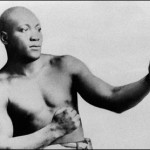TEACHING THE HARD HISTORY OF AMERICAN SLAVERY
Schools are not adequately teaching the history of American slavery. Educators are not sufficiently prepared to teach it. Textbooks do not have enough material about it.
(Southern Poverty Law Center) American enslavement of Africans shaped our country’s sociopolitical institutions and formed the cornerstone of our industrial revolution. Today the persistent disparities African Americans face — and the backlash that seems to follow every African-American advancement — trace their roots to slavery and its aftermath.
To understand the world today we must understand slavery. But SPLC research shows our schools are failing to teach the hard history of African enslavement.
We surveyed U.S. high school seniors and social studies teachers, analyzed a selection of state content standards, and reviewed 10 popular U.S. history textbooks. We found:
- High school seniors struggle on even the most basic questions about American enslavement of Africans.
- Teachers who are serious about teaching slavery struggle to provide deep coverage of the subject in the classroom.
- Popular textbooks fail to comprehensively cover slavery and enslaved peoples.
- State content standards are timid and fail to set appropriately high expectations.
Preserving the people who persevered
Exhibit at Cushing Memorial Library documents African-American history at Texas A&M
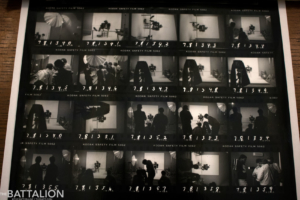
The In Fulfillment of a Dream Archive exhibits a partial history of African-Americans at Texas A&M University. The exhibit can be found at Cushing Memorial Library and Archives, Texas A&M University and contains many photos, negatives, and documents. (Photo By Cristian Aguirre)
(The Battalion) An archive at Cushing Memorial Library preserves the contributions, involvement and impact of African-Americans who have been entwined in Texas A&M dating back to its commencement in 1876.
The In Fulfillment of a Dream exhibit made its debut in the spring of 2001 at Cushing, but has since has become an online exhibit with a few remaining physical catalogues, according to Rebecca Hankins, Africana Resources Librarian and Curator. This exhibit reveals the history of African-Americans in the past 125 years at A&M by exploring complexities such as racial segregation, desegregation and unceasing determination through photographs, documents and texts.
The online exhibit can be viewed via the gallery index of Cushing’s archives and contains eight components: a preface, a timeline of important events, the purpose of the Prairie View campus, African-Americans workers at Texas A&M, African-Americans in the Corps of Cadets, African-Americans in sports at A&M, African-Americans in Student Life and Traditions and African-Americans as administrators, faculty and staff. (more) Click here to view the exhibit.
Related video, “Trailblazers“: Texas A&M Athletics celebrates Black History Month by honoring some of the greatest athletes to ever put on the uniform for the maroon and white — Judge Willie E.B. Blackmon ’73, Evelyn Smith Golden ’82 and Hugh McElroy ’71.
Trailblazing African-American architect’s east side building acquired by University of Texas
(Culture Map Austin) An archive at Cushing Memorial Library preserves the contributions, involvement and impact of African-Americans who have been entwined in Texas A&M dating back to its commencement in 1876.
The In Fulfillment of a Dream exhibit made its debut in the spring of 2001 at Cushing, but has since has become an online exhibit with a few remaining physical catalogues, according to Rebecca Hankins, Africana Resources Librarian and Curator. This exhibit reveals the history of African-Americans in the past 125 years at A&M by exploring complexities such as racial segregation, desegregation and unceasing determination through photographs, documents and texts.
The online exhibit can be viewed via the gallery index of Cushing’s archives and contains eight components: a preface, a timeline of important events, the purpose of the Prairie View campus, African-Americans workers at Texas A&M, African-Americans in the Corps of Cadets, African-Americans in sports at A&M, African-Americans in Student Life and Traditions and African-Americans as administrators, faculty and staff. (more)
Fronteras: How African-Americans Shaped Bexar County’s Landscape
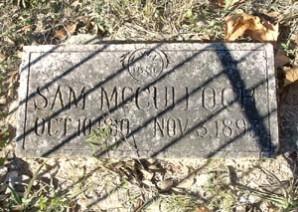
Gravesite of Samuel McCulloch, an African-American landowner in Bexar County, and the first person injured in the battle for Texas Independence. (www.everettfly.com)
(Texas Public Radio) The story of San Antonio is entwined with that of the Spaniards, Mexicans, Native Americans, and Anglo settlers. But the African-American story of the Alamo City is not one that’s widely known.
Everett Fly, an award-winning San Antonio architect and landscape architect, joins us on Fronteras to peel back the veil on the hidden history of San Antonio (0:55).
The east side of San Antonio is predominantly African-American, but Fly says it wasn’t always (2:48).
Fly says the accuracy of the Spanish archives helped verify African-American land ownership before the Texas Revolution and after the Civil War (4:22). One of those black landowners was the first man to shed blood in the Texas Revolution. (more, including podcast)
TIPHC Bookshelf
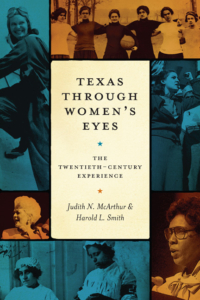 Published scholarship on black history in Texas is growing and we’d like to share with you some suggested readings, both current and past, from some of the preeminent history scholars in Texas and beyond. We invite you to take a look at our bookshelf page – including a featured selection – and check back as the list grows. A different selection will be featured each week. We welcome suggestions and reviews. This week, we offer, “Texas Through Women’s Eyes, The Twentieth-Century Experience,” by Judith N. McArthur and Harold L. Smith.
Published scholarship on black history in Texas is growing and we’d like to share with you some suggested readings, both current and past, from some of the preeminent history scholars in Texas and beyond. We invite you to take a look at our bookshelf page – including a featured selection – and check back as the list grows. A different selection will be featured each week. We welcome suggestions and reviews. This week, we offer, “Texas Through Women’s Eyes, The Twentieth-Century Experience,” by Judith N. McArthur and Harold L. Smith.
Texas women broke barriers throughout the twentieth century, winning the right to vote, expanding their access to higher education, entering new professions, participating fully in civic and political life, and planning their families. Yet these major achievements have hardly been recognized in histories of twentieth-century Texas. By contrast, Texas Through Women’s Eyes offers a fascinating overview of women’s experiences and achievements in the twentieth century, with an inclusive focus on rural women, working-class women, and women of color.
McArthur and Smith trace the history of Texas women through four eras. They discuss how women entered the public sphere to work for social reforms and the right to vote during the Progressive era (1900–1920); how they continued working for reform and social justice and for greater opportunities in education and the workforce during the Great Depression and World War II (1920–1945); how African American and Mexican American women fought for labor and civil rights while Anglo women laid the foundation for two-party politics during the postwar years (1945–1965); and how second-wave feminists (1965–2000) promoted diverse and sometimes competing goals, including passage of the Equal Rights Amendment, reproductive freedom, gender equity in sports, and the rise of the New Right and the Republican party.
Mar 28
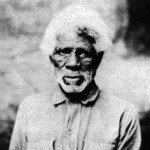 This day marks the death of Congressional Medal of Honor recipient Pompey Factor in 1928 near Brackettville. Factor was a black Seminole and a former slave who served as a U.S. Army scout working with the 24th Infantry, a Buffalo Soldier regiment. He received the MOH for his actions on April 25, 1875 at Eagle’s Nest Crossing near present-day Langtry, Texas when he helped rescue unit commander Lieutenant John L. Bullis, who was under heavy fire and nearly surrounded in a skirmish with Comanche Indians.
This day marks the death of Congressional Medal of Honor recipient Pompey Factor in 1928 near Brackettville. Factor was a black Seminole and a former slave who served as a U.S. Army scout working with the 24th Infantry, a Buffalo Soldier regiment. He received the MOH for his actions on April 25, 1875 at Eagle’s Nest Crossing near present-day Langtry, Texas when he helped rescue unit commander Lieutenant John L. Bullis, who was under heavy fire and nearly surrounded in a skirmish with Comanche Indians.
Mar 29
 Running back Earl Campbell, the first Heisman Trophy winner for the University of Texas football program, was born this day in Tyler in 1955. He attended John Tyler High School then starred for the Longhorns, becoming the first player to earn All-Southwest Conference honors four years (1974-1977). As a senior in 1977, he led the nation in rushing with 1,744 yards and was awarded the Heisman. Campbell was the first overall pick of the 1978 National Football League draft by the Houston Oilers with who he was a 1978 Rookie of the Year, three-time league Most Valuable Player, and league-leading rusher three times. In 1990, he was inducted to the College Football Hall of Fame and the following year to the Pro Football Hall of Fame. In 1981, the Texas Legislature enshrined Campbell as an Official State Hero Of Texas, an honor that had been bestowed on only three others – Davy Crockett, Stephen F. Austin, and Sam Houston.
Running back Earl Campbell, the first Heisman Trophy winner for the University of Texas football program, was born this day in Tyler in 1955. He attended John Tyler High School then starred for the Longhorns, becoming the first player to earn All-Southwest Conference honors four years (1974-1977). As a senior in 1977, he led the nation in rushing with 1,744 yards and was awarded the Heisman. Campbell was the first overall pick of the 1978 National Football League draft by the Houston Oilers with who he was a 1978 Rookie of the Year, three-time league Most Valuable Player, and league-leading rusher three times. In 1990, he was inducted to the College Football Hall of Fame and the following year to the Pro Football Hall of Fame. In 1981, the Texas Legislature enshrined Campbell as an Official State Hero Of Texas, an honor that had been bestowed on only three others – Davy Crockett, Stephen F. Austin, and Sam Houston.
Mar 29
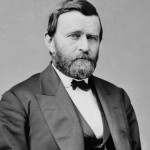 On this date in 1870, President Ulysses S. Grant signed an act to readmit Texas to Congressional representation after Texas voters approved a revised state constitution, as required under the Radical Reconstruction, and elected a state government in November 1869. The new Legislature convened and ratified the 13th, 14th and 15th Amendments to the U.S. Constitution, the final requirements for readmission to the Union. The 13th Amendment outlawed slavery, the 14th granted citizenship to “all persons born or naturalized in the United States,” which included former slaves, and the 15th guaranteed black men, including freed slaves, the right to vote.
On this date in 1870, President Ulysses S. Grant signed an act to readmit Texas to Congressional representation after Texas voters approved a revised state constitution, as required under the Radical Reconstruction, and elected a state government in November 1869. The new Legislature convened and ratified the 13th, 14th and 15th Amendments to the U.S. Constitution, the final requirements for readmission to the Union. The 13th Amendment outlawed slavery, the 14th granted citizenship to “all persons born or naturalized in the United States,” which included former slaves, and the 15th guaranteed black men, including freed slaves, the right to vote.
Mar 29
On this date in 1878, boxer John Arthur “Jack” Johnson was born in Galveston. Johnson would become the first African American to win the world heavyweight title in 1908 when he defeated Tommy Burns in Sydney, Australia via decision in a 14-round bout. In 113 fights, Johnson lost only eight and is considered one of boxing’s all-time greats. Former champion Jim Jeffries came out of retirement to challenge the black champion and was billed as “The Great White Hope” when they met on July 4, 1910, in Reno, Nevada. In what was called, “The Fight of the Century,” Johnson soundly beat Jeffries. In 1990, Johnson was inducted into the International Boxing Hall of Fame.
Blog: Ron Goodwin, Ph.D., author, PVAMU history professor
Ron Goodwin is an assistant professor of history at Prairie View A&M University. Even though he was a military “brat,” he still considers San Antonio home. Like his father and brother, Ron joined the U.S. Air Force and while enlisted received his undergraduate degree from Texas Lutheran University in Seguin, Texas. After his honorable discharge, he completed graduate degrees from Texas Southern University. Goodwin’s book, Blacks in Houston, is a pictorial history of Houston’s black community. His most recent book, Remembering the Days of Sorrow, examines the institution of slavery in Texas from the perspective of the New Deal’s Slave Narratives.
Recent Posts
Maybe they were right
Historians sometimes disagree as to the motives of the American Revolution and the development of the 1787 Constitution that still guides our broader society. Were the Founding Fathers willing to commit treason to protect their money? Maybe. When they sat down to amend the Articles of Confederation they ended with a new Constitution that presented
Wakanda Forever — Part 1
Ok, let’s begin by acknowledging that Wakanda is a fictional country in Africa. In the Marvel comics universe, it’s home to the superhero Black Panther. But there is still something about it that has recently struck a nerve in the black community. The Black Panther movie debuted in February to positive reviews and by February
Submissions wanted
Historians, scholars, students, lend us your…writings. Help us produce the most comprehensive documentation ever undertaken for the African American experience in Texas. We encourage you to contribute items about people, places, events, issues, politics/legislation, sports, entertainment, religion, etc., as general entries or essays. Our documentation is wide-ranging and diverse, and you may research and write about the subject of your interest or, to start, please consult our list of suggested biographical entries and see submission guidelines. However, all topics must be approved by TIPHC editors before beginning your research/writing.
We welcome your questions or comments. Please contact Mr. Michael Hurd, Director of TIPHC, at mdhurd@pvamu.edu.
Click edit button to change this text.


